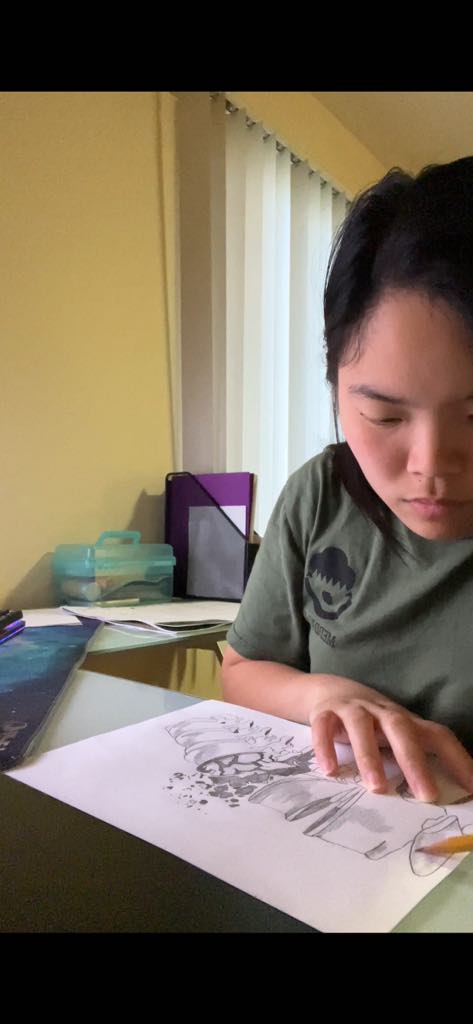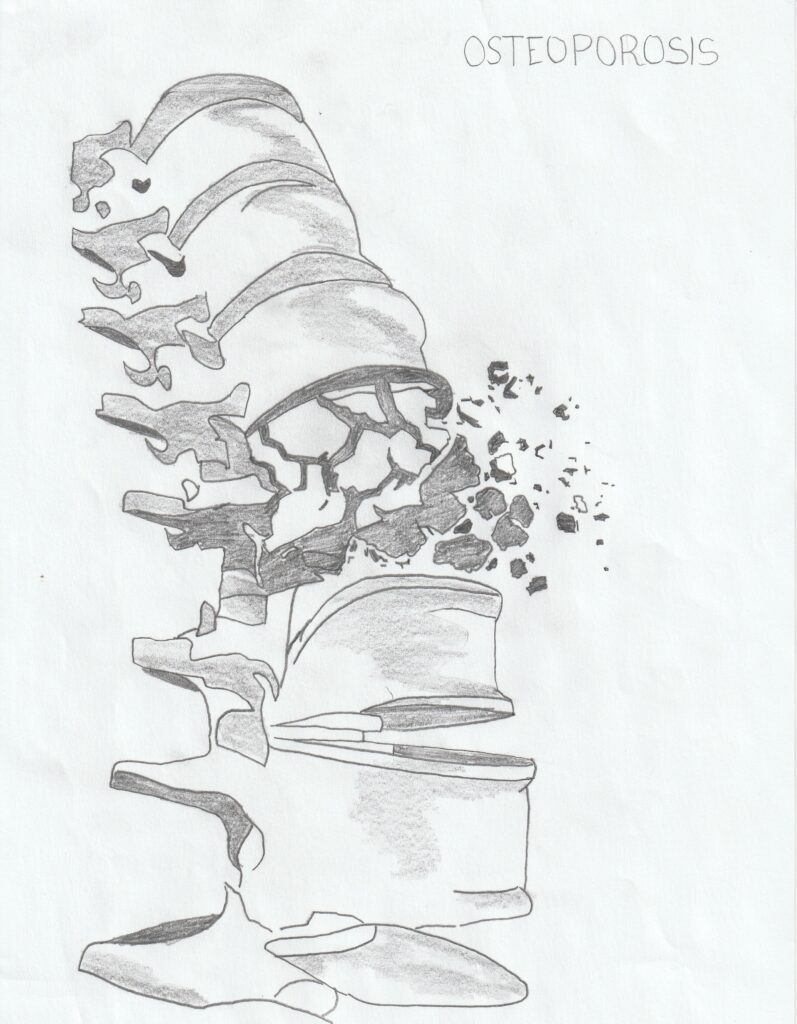Meryell Jarett Zita
Professor Don Larson
BIOL F111X
25 July 2024
Topic: Fragile Bone
Medium: Art
Objective: Know the stages of bone development and repair
My project highlights the spinal cord, where the bone density and strength decreases, leading to an increase fracture. It is referred to as a silent disease with no symptoms until fracture occurs. The cause of osteoporosis is multifaceted and complex and risk factors of osteoporosis are aging where it is a natural part of aging process where the bone density gradually declines as our age adds up. medication is also another factor where long-term use of certain medications can contribute greatly to osteoporosis. Medical condition is also another factor where rheumatoid arthritis, lupus and thyroid disorders, can increase having an osteoporosis. hormonal changes are one of the factors that decreases estrogens level in women during menopausal period and decrease of testosterone levels in men can also contribute osteoporosis. In addition, genetic or family history, race, and ethnicity can play a big role in osteoporosis risk. lifestyle is also another, for example low calcium and vitamin D, sedentary lifestyle, excessive smoking and alcohol consumption can also be an indicator of osteoporosis.
The symptoms of osteoporosis can be subtle until the fracture happens. common symptoms are loss of height, back pain, and stoop posture. in fact, a lot of people don’t realize that they have osteoporosis, until it happens, which can be devastating to other people when diagnosed.
To diagnose osteoporosis in elderly people they need to undergo bone density test, dual-energy X-ray absorptiometry or also known as DXA scan. The test measures bone density and can check to identify the individuals that are at risk of osteoporosis. X-rays and CT scans can also determine if the patient or individual has osteoporosis.
There are treatments and management of osteoporosis that involves a combination of medication and lifestyle change, and medications that can help patients that have osteoporosis. In lifestyle change exercise regularly and having a balanced diet rich with Vit. D, calcium and quitting substance abuse can help manage osteoporosis. fall prevention is another strategy that can reduce the risk of bone fractures.
To prevent osteoporosis, it is critical to know the do’s and don’ts to prevent fracture and to help bone growth. by taking adequate Vit. D and calcium in our daily meal it can help reduce the density of bones, regular exercise by weight bearing and resistance training can help build and maintain strong bones. Maintaining healthy weight and quitting substance abuse like smoking and alcohol consumption can help prevent osteoporosis in older people, and a regular bone density test can help older people identify if they are at risk of osteoporosis, that can allow treatment and management.
Citation:
Weaver CM;Gordon CM;Janz KF;Kalkwarf HJ;Lappe JM;Lewis R;O’Karma M;Wallace TC;Zemel BS; (n.d.). The National Osteoporosis Foundation’s position statement on peak bone mass development and lifestyle factors: A systematic review and implementation recommendations. Osteoporosis international : a journal established as result of cooperation between the European Foundation for Osteoporosis and the National Osteoporosis Foundation of the USA. https://pubmed.ncbi.nlm.nih.gov/26856587/
Messina OD;Vidal Wilman M;Vidal Neira LF; (n.d.). Nutrition, osteoarthritis and cartilage metabolism. Aging clinical and experimental research. https://pubmed.ncbi.nlm.nih.gov/30982220/Links to an external site.
What is osteoporosis and what causes it?. Bone Health & Osteoporosis Foundation. (2024, January 24). https://www.bonehealthandosteoporosis.org/patients/what-is-osteoporosis/


